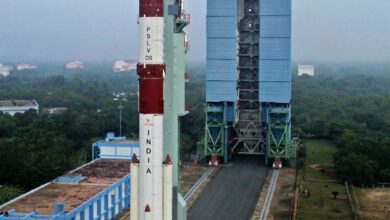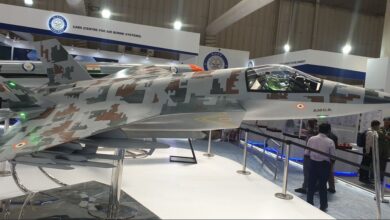The Tsar Bomb: Unveiling the World’s Most Powerful Nuclear Weapon

The Tsar Bomb
In the annals of nuclear weaponry, one name stands out for its sheer power and symbolic representation of Cold War tensions: the Tsar Bomba. Developed by the Soviet Union in the late 1950s, this bomb remains the most powerful explosive device ever detonated by humankind. Its creation and testing marked a pivotal moment in the nuclear arms race, underscoring the extremities to which nations would go in the pursuit of military supremacy.
Development and Design
The Tsar Bomba, also known as the AN602 hydrogen bomb, was a product of the intense competition between the United States and the Soviet Union. Led by chief designer Andrei Sakharov, the Soviet team aimed to create a bomb with unprecedented explosive power. The Tsar Bomba was a three-stage hydrogen bomb with a yield of 50 megatons, more than 3,000 times the strength of the bomb dropped on Hiroshima.

The Test of 1961
On October 30, 1961, the world witnessed the might of the Tsar Bomba. The bomb was air-dropped over the Novaya Zemlya archipelago in the Arctic Ocean. The resulting explosion was colossal, with a mushroom cloud rising to about 60 kilometers in height and a shockwave that was felt over hundreds of kilometers. The brightness of the explosion was visible from a distance of more than 1,000 kilometers.
Implications and Reactions to the Tsar Bomba
Global Reaction
The detonation of the Tsar Bomba sent shockwaves, both literal and metaphorical, around the world. The sheer size of the explosion, far beyond anything previously witnessed, sparked a global outcry. Countries around the world, both allies and adversaries of the Soviet Union, expressed deep concern over the potential for such destructive power. The test not only demonstrated the terrifying capabilities of nuclear weapons but also highlighted the escalating arms race between the superpowers.
Political Implications
Politically, the test of the Tsar Bomba had far-reaching implications. It intensified the Cold War tensions, but paradoxically, it also pushed the United States and the Soviet Union towards considering arms control measures. The fear of mutual annihilation started to outweigh the perceived benefits of nuclear supremacy. This eventually led to a series of diplomatic efforts and treaties aimed at limiting nuclear tests and reducing the number of nuclear weapons.
Influence on Nuclear Policies
The Tsar Bomba had a profound impact on nuclear policies worldwide. It became a catalyst for the Partial Nuclear Test Ban Treaty of 1963, which prohibited nuclear tests in the atmosphere, outer space, and underwater. The bomb’s test underscored the necessity of international cooperation to prevent nuclear proliferation and the importance of strategic arms limitation talks.
Public Reaction and Anti-Nuclear Movement
Public reaction to the Tsar Bomba was one of fear and indignation. The test significantly contributed to the rise of the anti-nuclear movement in the 1960s and 70s. People across the globe, alarmed by the destructive potential showcased by the Tsar Bomba, began to actively protest against nuclear weapons and demand disarmament. This period marked a significant shift in public consciousness regarding the nuclear threat, leading to a more robust global dialogue on nuclear disarmament.

Environmental and Health Concerns
The environmental and health concerns raised by the detonation of the Tsar Bomba were significant. The release of large amounts of radioactive material into the atmosphere raised questions about the long-term ecological and health impacts of nuclear testing. This led to increased scientific research and monitoring of nuclear test sites and a greater awareness of the environmental consequences of nuclear weapons.
Challenges and Limitations of the Tsar Bomba
- Technological Challenges: Designing and constructing the Tsar Bomba posed immense technological challenges. The sheer size and complexity of the bomb required significant advancements in materials and engineering. Ensuring the successful detonation of such a large device was a formidable task.
- Delivery System Limitations: The Tsar Bomba was so large and heavy (weighing around 27 tons) that it posed significant challenges in terms of delivery. It required a specially modified aircraft to carry it and could only be delivered by air drop. Its size and weight limited its practicality as a deployable weapon in a real-world scenario.
- Radiation and Environmental Concerns: The massive explosion produced by the Tsar Bomba resulted in substantial environmental contamination due to radioactive fallout. This raised serious concerns about the long-term ecological impact and the health risks associated with such high levels of radiation.
- Political and Diplomatic Repercussions: The testing of the Tsar Bomba significantly heightened global tensions during the Cold War. It led to international condemnation and fear, contributing to the arms race and exacerbating geopolitical strains.
- Economic Costs: The development and testing of the Tsar Bomba were extremely costly. The allocation of resources to such projects came at the expense of other economic and social needs within the Soviet Union.
- Limited Strategic Value: Despite its immense power, the Tsar Bomba had limited strategic value. Its size and the destructive capacity were considered overkill, as a smaller, more manageable weapon could achieve strategic military objectives more effectively and discreetly.
- Escalation of the Arms Race: The development of the Tsar Bomba further escalated the nuclear arms race, prompting other nations, particularly the United States, to develop larger and more destructive nuclear weapons, thereby increasing the global nuclear threat.
- Morality and Ethics: The creation of such a massively destructive weapon raised profound moral and ethical questions. It symbolized the extreme extents to which human beings could go in their pursuit of power and domination, disregarding the potential for catastrophic humanitarian consequences.
- Treaty and Disarmament Challenges: The Tsar Bomba’s test led to increased calls for nuclear disarmament and the regulation of nuclear tests, culminating in various treaties and agreements. However, ensuring compliance and mutual trust among nuclear powers remained a significant challenge.
- Legacy and Historical Interpretation: The Tsar Bomba’s place in history is complex. While it stands as a testament to human ingenuity, it also represents a dark period of human history where the focus was on creating instruments of mass destruction, posing a continuous challenge in terms of historical interpretation and the lessons learned.
Environmental Impact
The environmental impact of the Tsar Bomba was significant. The explosion released an enormous amount of radioactive material into the atmosphere, contributing to the long-term effects on the environment and human health. This event played a crucial role in shaping global attitudes towards nuclear testing and environmental conservation.
Legacy and Disarmament
The Tsar Bomba’s test had a paradoxical effect. While it showcased the heights of nuclear capabilities, it also pushed the world towards disarmament. The fear and awe it inspired led to a series of treaties and agreements, such as the Partial Nuclear Test Ban Treaty of 1963, aimed at limiting the proliferation and testing of nuclear weapons.

The Tsar Bomba remains a powerful reminder of the peak of nuclear arms escalation and the need for disarmament. It stands as a testament to human ingenuity and the perils of its use in warfare. The legacy of the Tsar Bomba continues to influence global nuclear policies and the pursuit of a world free from the threat of nuclear annihilation.
FOR MORE- https://thescienceman.com/skyward-evolution-the-making-of-the-fufa-6th-gen/




